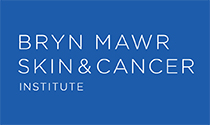Poison Ivy, Poison Oak, & Sumac
Soothe Bothersome Rashes from Plant-Based Skin Irritants in Bryn Mawr, Newtown Square, Philadelphia, and the Main Line
- Home
- Medical Dermatology
- DERMATOLOGY CONDITIONS
- Poison Ivy, Poison Oak, & Sumac
While you’re enjoying the outdoors, it’s always a good idea to refrain from touching certain plants, such as poison oak, poison sumac, and poison ivy. Bryn Mawr Skin & Cancer Institute often treats patients who are suffering from an allergic reaction to these plants. Though contact with them is often thought of as a summertime problem, the truth is that they can cause rashes during any season—including the winter. In fact, seasonal changes to the plants can make them more challenging to identify and avoid in the colder months.
Rashes associated with these plants are not contagious, and they usually aren’t serious. However, they can be extremely itchy, uncomfortable, and even painful, with symptoms persisting for several weeks. Some patients have extensive reactions, which involve their entire body.
Patients who have a severe or persistent rash from poison oak, poison sumac, or poison ivy can find solutions at Bryn Mawr Skin & Cancer Institute. To schedule an appointment, Please BOOK ONLINE, call 610.525.5028, or Contact Us.
What Causes Rashes from Poison Ivy, Poison Oak, and Poison Sumac?
The sticky oil resin—called urushiol—found in and on the leaves, stems, and roots of these plants triggers an allergic reaction and rashes in many people. This reaction is considered to be a form of contact dermatitis.
Most people are allergic to the oil, which is why these rashes occur so frequently. Although direct contact with poison ivy, oak, and sumac often causes a reaction, an itchy rash can also develop after touching other people or objects—such as shoes or unwashed clothing—that have been in contact with poison ivy or similar plants. Anything that still has urushiol on it can cause the reaction.
Although pets are usually not allergic to these plants, the oil can get stuck on the fur of cats and dogs and spread to you when you touch them.
Poison ivy grows throughout most areas of the United States, but is more common on the East Coast and Midwest. It grows as a small shrub or a vine that climbs telephone poles, fences, and trees. Plants consist of three leaflets that range from light to dark green in color during the summer. The leaves take on a reddish color in the spring, when white flowers bloom. Leaves can look red, orange, or yellow in the fall and deep red in winter.
Like poison ivy, poison oak can be found all over the United States, but is found most often on the West Coast. It does grow on the East Coast, but is a rare problem in the Midwest. The often-shiny leaves tend to develop in a distinctive pattern of threes as a shrub or vine that can be bare—but still able to deliver urushiol—in the winter. The leaves are a deep green in the summer months, gradually changing to a vivid red.
Poison sumac is much less widespread than poison ivy or oak. It tends to grow in swamp-like areas as a shrub, or even a small tree, that has smoother-edged and pointed three leaflets. Watch for poison sumac in the Southeast—especially Florida—and northern United States.
A warning: “Leaves of 3, leave them be!”
What Are the Symptoms of a Poison Ivy, Oak, or Sumac Rash?
An estimated 85 percent of all Americans are allergic to the urushiol in poison ivy and similar plants. Some of the typical symptoms associated with this rash include skin that is overall red in the involved area or features red streaks or bumps, swelling, intense itching, crusting, oozing, and fluid-filled blisters. Rashes often develop in geometric, straight lines but can spread out depending on how the plant or contaminated object brushed against the skin. Symptoms may show up anywhere from a few hours to several days after you’ve had contact with the plants.
Inhaling smoke from burning poison ivy, oak, or sumac can cause breathing difficulties. Dermatologists warn patients about carrying logs into the house to burn in the fireplace during the winter months. The logs may still have urushiol on them despite not seeing a vine!
What Are the Risk Factors for Rashes from Poison Ivy and Other Irritants?
People of all ages—even infants and children—are susceptible to rashes from poison ivy and other plants that contain urushiol. The people who are most at risk of developing rashes are people who take part in outdoor work or hobbies that make them more likely to come into contact with problematic plants. These activities include cable and telephone line installation, camping, construction, farming, firefighting, forestry, gardening, hiking, and landscaping.
Treatment Options for Poison Ivy and Other Rashes
If the skin is left alone, rashes from poison ivy, oak, and sumac will eventually go away on their own within two to three weeks. Patients can use home remedies to relieve the symptoms of mild rashes, such as soothing lotions, over-the-counter topical treatments, oatmeal baths, and cool compresses. For more severe rashes, prescription medications like topical and oral corticosteroids or antibiotics—if a bacterial infection were to occur due to scratching, opening wounds in the skin—can be given.

Meet Our Dermatologists &
Certified Physician Assistants
Our board-certified dermatologists & PA-Cs are dedicated to detecting and treating skin cancers. We treat the full spectrum of skin diseases. Our Mohs and Plastic Surgery practices are integrated, and offer patients the most advanced skin cancer treatment, delivering superior outcomes.
How Can You Prevent Getting a Rash from Poison Ivy?
One of the most effective ways of stopping rashes from poison ivy, poison oak, and poison sumac is by knowing what to look for and avoiding contact with these plants. If you do happen to touch a suspicious leaf or stem, be sure to wash your skin and clothing as soon as possible to get rid of the oil. If a rash develops, take an over-the-counter antihistamine, apply a topical steroid, and take cool oatmeal baths to relieve some of the itchiness.
Get advice, diagnosis, and treatment for uncomfortable skin rashes caused by plants like poison ivy near Bryn Mawr, Newtown Square, and Philadelphia. To schedule an appointment, Please BOOK ONLINE, call 610.525.5028, or Contact Us.

























